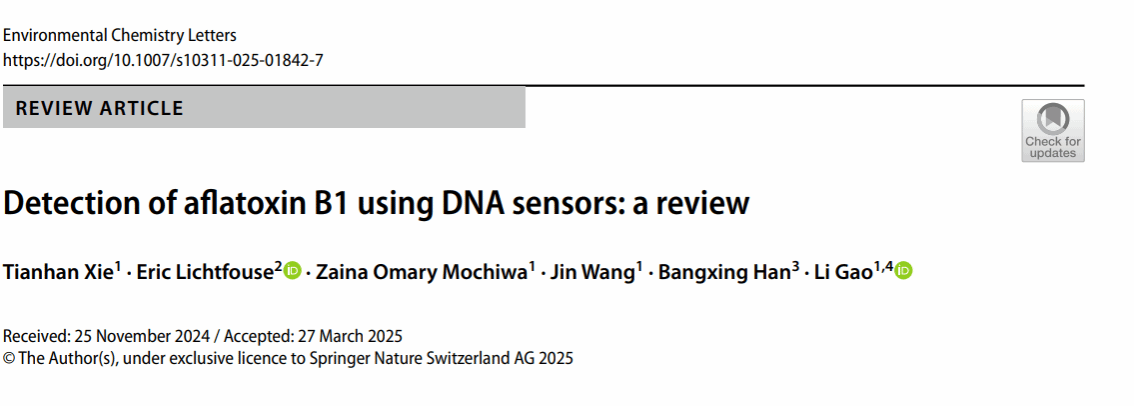Recently, a review paper titled "Detection of aflatoxin B1 using DNA sensors: a review" was published in Environmental Chemistry Letters. Jiangsu University is the first completion unit, a graduate student, Tianhan Xie, is the first author, and his advisor Professor, Li Gao, is the corresponding author.

Aflatoxin B1 (AFB1) is known as a carcinogenic fungal toxin produced by Aspergillus species, commonly found in food such as grains and peanuts. Aflatoxin B1 has serious hepatotoxic effects on the human body, causing liver cell necrosis and cirrhosis, and is listed as a first-class carcinogen by the International Agency for Research on Cancer (IARC). Although traditional detection methods such as thin-layer chromatography (TLC), high-performance liquid chromatography (HPLC), enzyme-linked immunosorbent assay (ELISA), and liquid chromatography tandem mass spectrometry (LC-MS/MS) are widely used, these methods are associated with limitations, such as high cost, complex operation, and low sensitivity.
This review mainly introduces the application of DNA based biosensors in the detection of aflatoxin B1, with a focus on the latest developments in electrochemical and optical sensors. Electrochemical biosensors include sensors based on electrochemical impedance spectroscopy (EIS), amperometry, voltammetry, and potentiometry. These electrochemical sensors possess advantages of low cost, fast response, easy miniaturization, and high sensitivity. Optical sensors involve the techniques, such as colorimetry, surface plasmon resonance (SPR), fluorescence, and electrochemiluminescence. The paper provides a detailed introduction to the application of aptamers in DNA sensors. Aptamers are short DNA or RNA sequences selected through the system evolution ligand selection (SELEX) technique, which can bind to specific molecules and serve as biological recognition elements for detecting aflatoxin B1. In addition, the combination of nanomaterials (such as gold nanoparticles, black phosphorus nanosheets, graphene oxide, etc.) with DNA sensors significantly improves the selectivity and sensitivity of the sensors. This review also summarizes various research examples, demonstrating the application and effectiveness of different DNA sensor platforms in the detection of aflatoxin B1. The research results depict that DNA based sensors have the characteristics of high efficiency, speed, sensitivity, and selectivity, and are important tools for detecting aflatoxin B1 in food safety monitoring.
Tianhan Xie,Eric Lichtfouse,Zaina Omary Mochiwa,Jin Wang, Bangxing Han,Li Gao,Environmental Chemistry Letters,https://doi.org/10.1007/s10311-025-01842-7.
(By Li Gao)